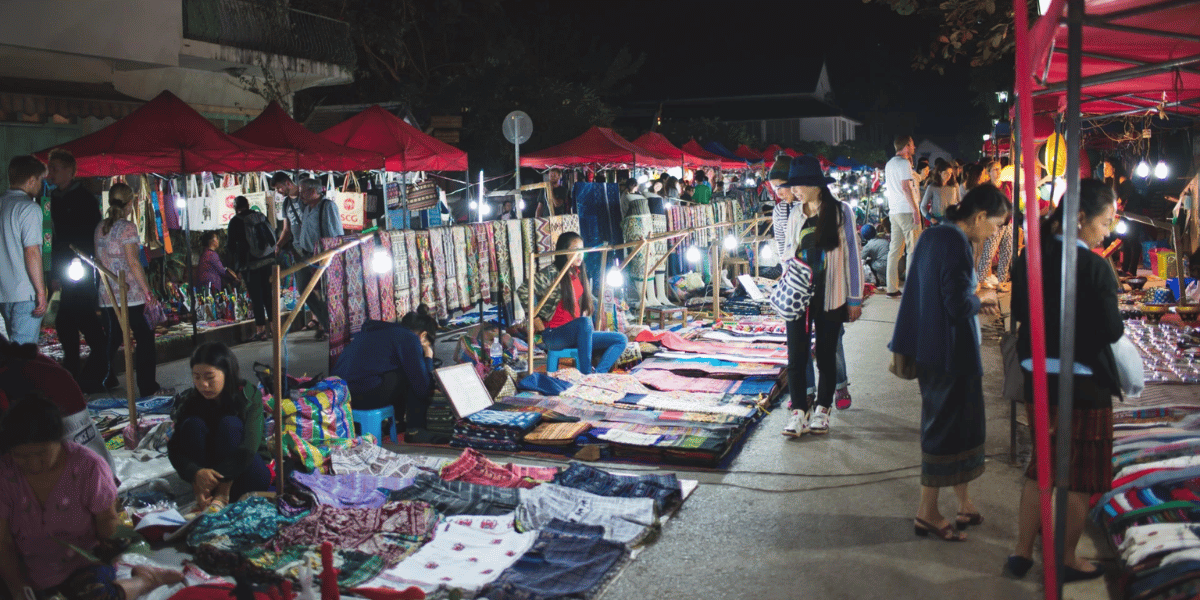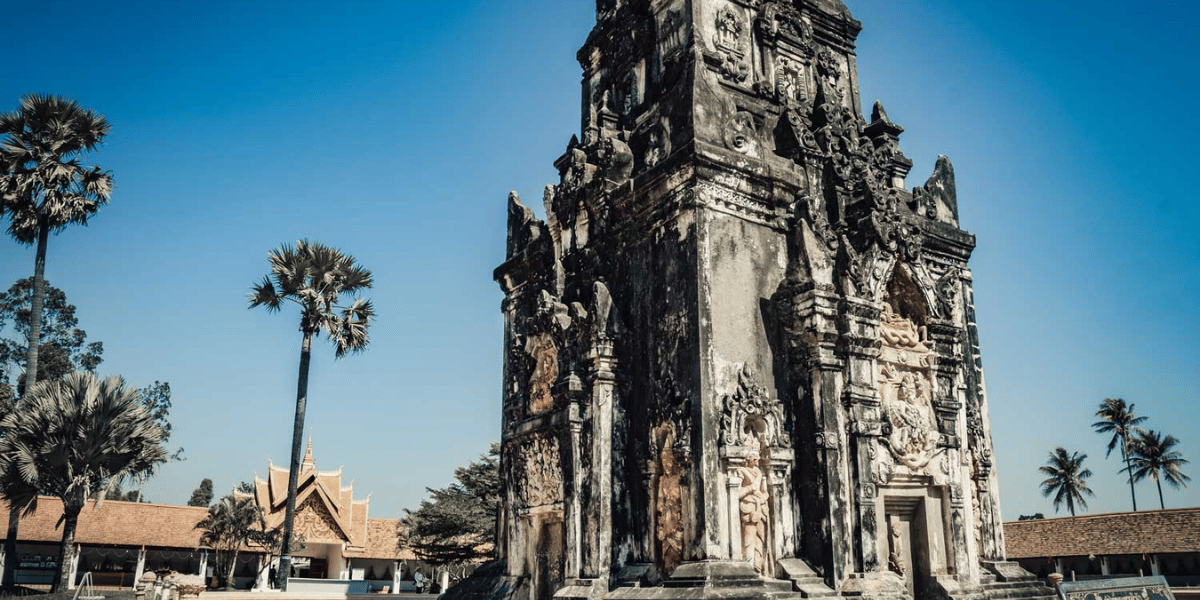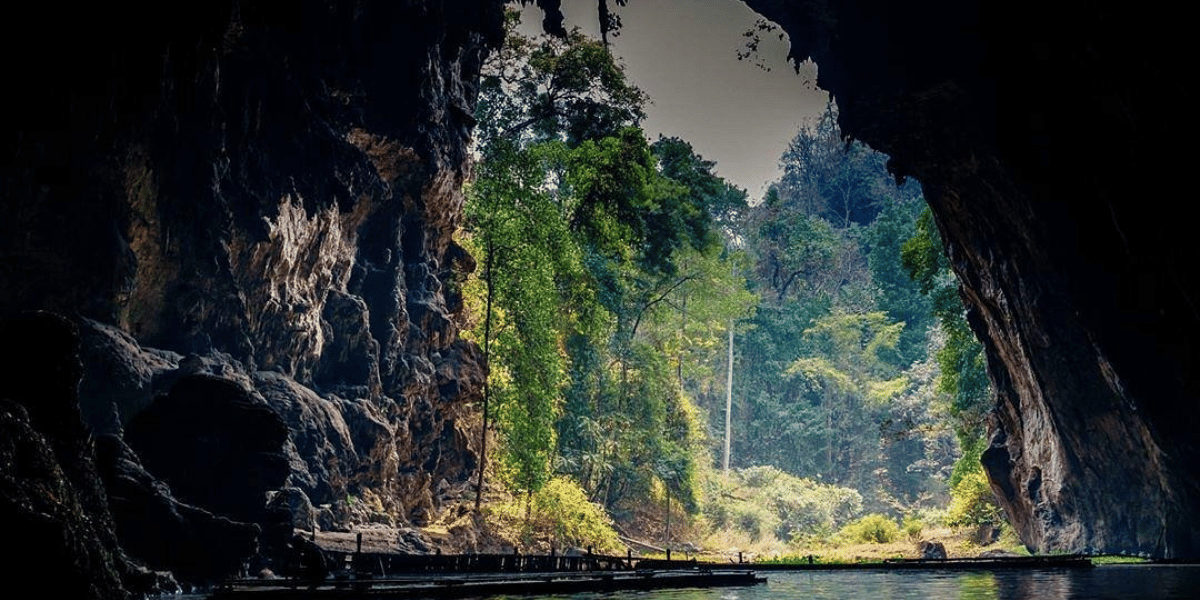Discover the Ecotourism and Cultural Riches of Luang Namtha: A Serene Escape in Northern Laos
Last Updated on 6 October, 2024 by admin
Luang Namtha, a mountainous province in northern Laos, is famed for its untouched natural landscapes, rich cultural diversity of numerous ethnic minority groups, and exciting ecotourism opportunities. This region offers an escape into the serenity of nature, where dense forests, flowing rivers, and verdant rice paddies create a breathtaking backdrop for exploration. The province’s charm is further enhanced by its vibrant ethnic communities, including the Tai Dam, Hmong, and Akha people, who have preserved their traditional ways of life for centuries.
Luang Namtha’s allure lies not only in its stunning scenery but also in the warmth and hospitality of its people, making it a perfect destination for those seeking cultural immersion and a connection to nature. Visitors can trek through Nam Ha National Protected Area, visit remote villages, or paddle down the Namtha River, all while experiencing the simplicity and tranquillity of life in the region. This introduction sets the stage for a memorable journey, where travellers can immerse themselves in the natural beauty and cultural richness of Luang Namtha, and discover the authentic heart of northern Laos.
Top Attractions in Luang Namtha
Luang Namtha is a treasure trove of natural beauty and cultural richness, offering unique experiences that take travellers deep into the heart of northern Laos. Below are some of the most compelling attractions to explore in this serene and captivating region.
Nam Ha National Protected Area
Nam Ha National Protected Area is one of Laos’ most biodiverse regions, spanning a vast area of pristine forest that serves as a sanctuary for rare wildlife such as gibbons, leopards, sun bears, and various species of birds. This protected area is a hub for ecotourism, offering visitors the chance to immerse themselves in both the natural environment and the traditional cultures of the ethnic minorities who live in and around the park.
- Activities: Trekking through dense forests, engaging in wildlife observation, experiencing homestays in ethnic villages (such as with the Akha or Khmu people), kayaking on the Nam Tha River, and learning about local conservation efforts.
My time trekking through Nam Ha was truly an adventure. The trails led us through lush jungles filled with the sounds of wildlife, and we even spotted a few rare birds along the way. Staying overnight in an Akha village was the highlight—sharing meals with the local families, listening to their stories, and witnessing their traditional way of life up close. It was a humbling experience that left a lasting impression, deepening my appreciation for both nature and cultural diversity.
Tad Sae Waterfall
Hidden within the dense forest of Luang Namtha is the stunning Tad Sae Waterfall. The waterfall cascades over multiple levels of limestone rock, creating natural pools where visitors can swim and cool off. The refreshing waters, surrounded by lush greenery and towering trees, make it a perfect spot for relaxation and taking in the beauty of nature.
- Activities: Swimming in the natural pools, hiking through the surrounding forest, enjoying a picnic by the waterfall, and relaxing in the peaceful environment.
Visiting Tad Sae Waterfall was a refreshing escape from the heat of the day. After a short but scenic hike through the forest, the sight of the cascading water greeted us, and it was a welcome relief to take a dip in the cool, clear pools. The tranquil setting, far removed from the hustle and bustle of everyday life, made it feel like we had stumbled upon a hidden paradise. It was a perfect spot to relax, reflect, and soak in the natural beauty.
Nalan Village
Nestled in the Nam Ha region, Nalan Village offers a glimpse into the traditional life of the Lanten people, one of the ethnic groups in northern Laos. The village is known for its traditional stilt houses, which stand as a testament to the community’s cultural heritage. Here, visitors can observe and participate in age-old customs, from weaving and dyeing fabrics using natural indigo to crafting bamboo tools. This immersion into village life provides a deeper understanding of the rich cultural tapestry of Luang Namtha.
- Activities: Village tours, interacting with locals, learning traditional crafts such as weaving and bamboo tool-making, and experiencing daily life through activities like cooking and farming.
During my stay in Nalan Village, I was struck by the simplicity and warmth of the Lanten people. I had the chance to join the women as they wove intricate patterns on handlooms, creating beautiful textiles dyed with natural colours. The hospitality of the villagers was overwhelming, and sitting around a fire at night, sharing stories, made me feel deeply connected to the community. This immersion in their culture was not just a visit—it was a transformative experience that gave me a profound appreciation for their way of life.
Luang Namtha Market
The vibrant Luang Namtha Market is a bustling centre of local life, offering everything from fresh produce and spices to handmade textiles and crafts produced by the various ethnic groups in the region. The market provides a sensory experience where the sights, sounds, and smells of local life come alive. It’s also the perfect place to sample the authentic flavours of northern Laos, with street vendors selling local delicacies such as khao piak sen (a traditional noodle soup) and laap (a minced meat salad flavoured with herbs and spices).
- Activities: Shopping for local handicrafts and textiles, tasting authentic street food, interacting with local vendors, and experiencing the daily rhythm of Lao life.

Wandering through the Luang Namtha Market was a feast for the senses. The vibrant colours of fresh vegetables, the smell of herbs and spices, and the lively banter between vendors created an atmosphere of energy and life. I indulged in some khao piak sen, a comforting noodle soup that was perfect after a morning of exploration. The market is not just a place to shop; it’s a window into the daily life and culture of Luang Namtha’s diverse communities.
Luang Namtha Provincial Museum
The Luang Namtha Provincial Museum provides valuable insight into the rich cultural history of the region, showcasing artefacts, traditional clothing, tools, and handicrafts from the various ethnic groups living in the province. Visitors can learn about the history of Luang Namtha, from its early settlements to its role in the resistance during the Indochina Wars.
- Activities: Exploring exhibitions on the cultural and historical heritage of Luang Namtha, learning about the diverse ethnic groups, and gaining a deeper understanding of the province’s historical significance.
Visiting the Luang Namtha Provincial Museum was an eye-opening experience. The exhibits gave me a detailed look into the region’s complex history and the many ethnic groups that call this area home. Seeing the traditional clothing, tools, and ceremonial artefacts up close made me appreciate the cultural depth and diversity that makes Luang Namtha so special.
Phou Fa Mountain (Đỉnh Phou Fa)
Towering over the town of Luang Namtha, Phou Fa Mountain offers adventurous travellers a rewarding trek to the summit, where panoramic views of the Namtha Valley and the town below await. The trek is challenging but well worth the effort, particularly at sunrise or sunset, when the valley is bathed in golden light, creating a truly magical scene.
- Activities: Trekking to the summit, enjoying panoramic views of Luang Namtha and the surrounding valley, taking photographs of the stunning landscape, and relaxing at the summit after the hike.
The climb up Phou Fa Mountain was a thrilling adventure. As we ascended, the landscape unfolded before us, offering breathtaking views of the valley below. Reaching the summit at sunset was the perfect reward—the golden light spreading over the rice fields and forested hills was a sight I will never forget. It was the perfect way to end a day of exploring Luang Namtha’s natural wonders.
Luang Namtha is a captivating destination where nature, culture, and adventure blend seamlessly. From trekking through the Nam Ha National Protected Area to immersing yourself in the traditional life of Nalan Village and enjoying the panoramic views from Phou Fa Mountain, this province offers a wealth of experiences that are both enriching and unforgettable. Whether you’re a nature lover, culture enthusiast, or adventure seeker, Luang Namtha promises a journey filled with discovery and wonder.
Travel Tips for Visiting Luang Namtha
To make the most of your visit to Luang Namtha, it’s important to plan carefully and consider key aspects such as visa requirements, transportation, and cultural customs. Here’s a detailed guide to help you prepare for your journey.
Visa Requirements
For most nationalities, obtaining a tourist visa for Laos is a simple process. You can apply for a visa-on-arrival at major entry points such as Wattay International Airport in Vientiane or land border crossings. An alternative is the e-visa, which can be applied for online before your trip. Ensure your passport has at least six months of validity, and carry passport-sized photos and the visa fee in US dollars. Visa-on-arrival typically grants a 30-day stay, but it’s always good to double-check the requirements based on your nationality.
Transportation Options
Luang Namtha can be accessed through a variety of transport methods:
- By Air: The most convenient way is to fly to Luang Namtha Airport via domestic flights from Vientiane or Luang Prabang. The airport is located about 6 km from the town centre, and taxis or tuk-tuks are available to take you to your accommodation.
- By Bus: If you’re already in Laos, long-distance buses or minivans are available from major cities like Vientiane or Luang Prabang. Although the bus journey can be long and bumpy, it offers scenic views of northern Laos’ mountainous landscapes. Make sure to check the schedule beforehand, as buses may be less frequent in remote areas.
Best Time to Visit
The climate in Luang Namtha is tropical, with distinct wet and dry seasons. The best time to visit is during the dry season, from November to February, when the weather is cooler and more pleasant for outdoor activities like trekking and village visits. Temperatures during this period range from 15°C to 25°C, making it perfect for exploring the natural beauty of the region. The rainy season, from May to October, brings lush green landscapes but can make trekking difficult due to muddy paths and swollen rivers.
Local Cuisine
Luang Namtha is known for its unique Lao cuisine, influenced by the many ethnic groups in the area. Some must-try dishes include:
- Khao Soi: A northern Lao noodle soup made with rice noodles and minced meat, often served with fresh herbs.
- Laap: A traditional Lao salad made with minced meat (usually pork or chicken), mixed with lime juice, herbs, and toasted rice powder. It’s a delicious and refreshing dish.
- Sticky Rice: A staple in every Lao meal, often served alongside grilled meats or spicy dips like Jeow (a type of chili paste).
- Khmu Dishes: In villages like Nalan, you might have the chance to try traditional Khmu food, such as forest vegetables and steamed fish cooked in bamboo.
Eating at local markets is an excellent way to experience the rich flavours of Luang Namtha, with street vendors offering fresh, authentic dishes.
Accommodation Options
Luang Namtha offers a range of accommodation to suit different budgets and preferences:
- Hotels and Guesthouses: In the town centre, you’ll find several affordable guesthouses and hotels, with prices varying based on amenities. They provide comfortable rooms and easy access to local attractions.
- Homestays: For a more authentic experience, consider staying in a homestay within one of the ethnic villages, such as Nalan or Ban Nam Ha. These homestays allow you to live alongside the local community, participate in daily activities, and gain a deeper insight into their way of life.
No matter where you stay, Luang Namtha’s accommodation options offer a warm and welcoming atmosphere, with the chance to experience the genuine hospitality of the Lao people.
Cultural Etiquette and Local Customs
When travelling to Luang Namtha, it’s important to respect the local customs and traditions. Here are some key cultural tips to keep in mind:
- Dress Modestly: When visiting temples or villages, ensure your shoulders and knees are covered to show respect for the local culture. Lightweight, long-sleeved clothing is recommended.
- Greetings: A traditional Lao greeting, known as the “nop”, involves placing your palms together in front of your chest and bowing slightly. It’s polite to greet people this way, especially elders.
- Buddhist Customs: Be respectful when visiting temples. Always remove your shoes before entering, and avoid pointing your feet towards Buddha statues. It’s also important to ask for permission before taking photos, particularly of monks.
- Tread Lightly: In villages, be mindful of where you step. It’s customary not to step over people’s belongings or pass food or objects over someone’s head, as this is considered impolite.
By preparing properly and respecting local customs, your trip to Luang Namtha will be more enjoyable and culturally enriching.
Conclusion
Luang Namtha stands out as a perfect destination for travellers who seek ecotourism, cultural discovery, and peaceful retreats. With its untouched natural beauty, rich biodiversity, and vibrant ethnic cultures, this province offers a unique blend of adventure and tranquillity. Whether trekking through the dense forests of Nam Ha National Protected Area, exploring traditional villages like Nalan, or simply enjoying the peaceful atmosphere of the rural landscapes, Luang Namtha promises experiences that connect you to both nature and culture in profound ways.
For those looking to escape the busy world and immerse themselves in authentic experiences, Luang Namtha is a place where adventure meets serenity. We encourage you to visit this hidden gem of Laos and discover the diverse landscapes, welcoming communities, and unforgettable moments that make it a must-visit destination for any traveller.




